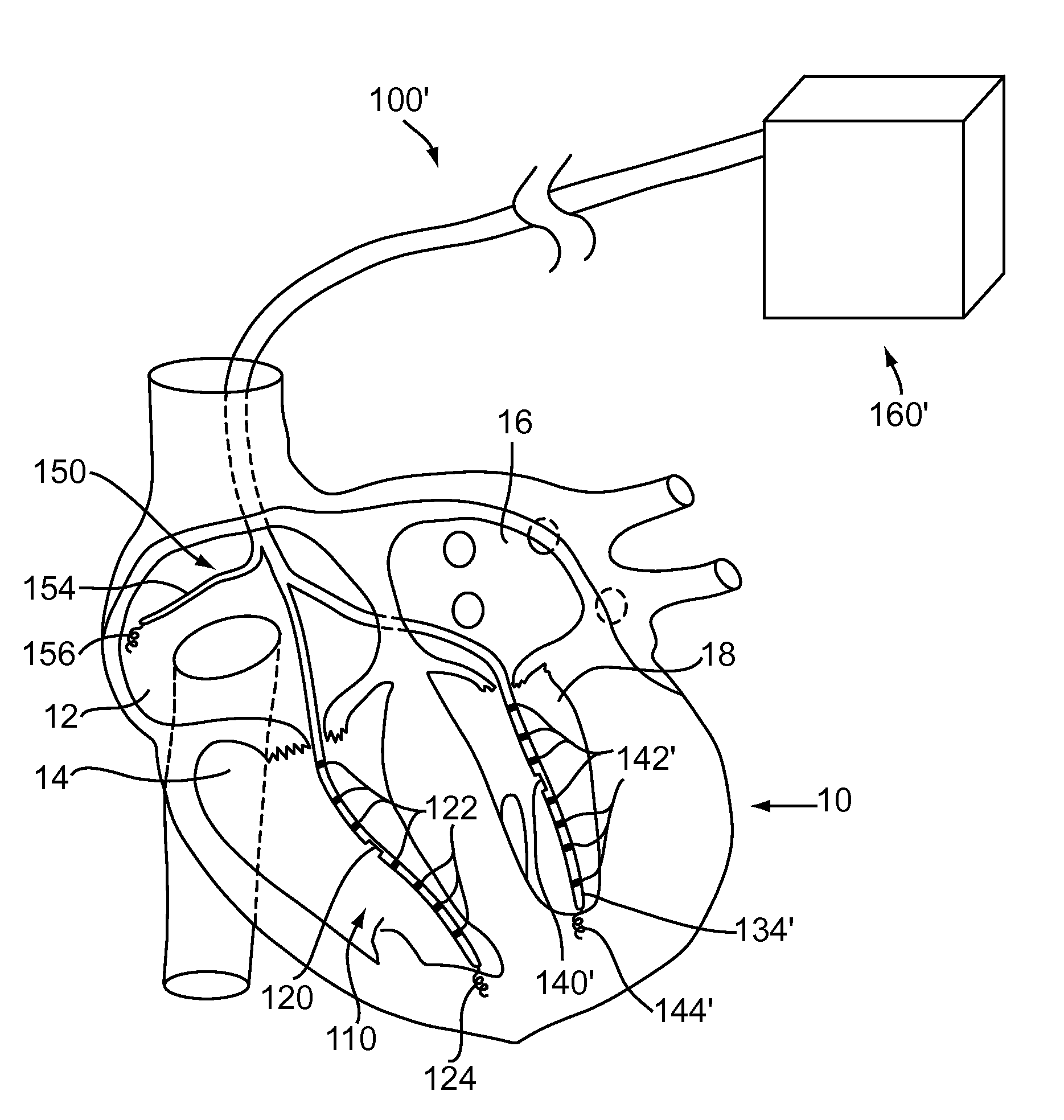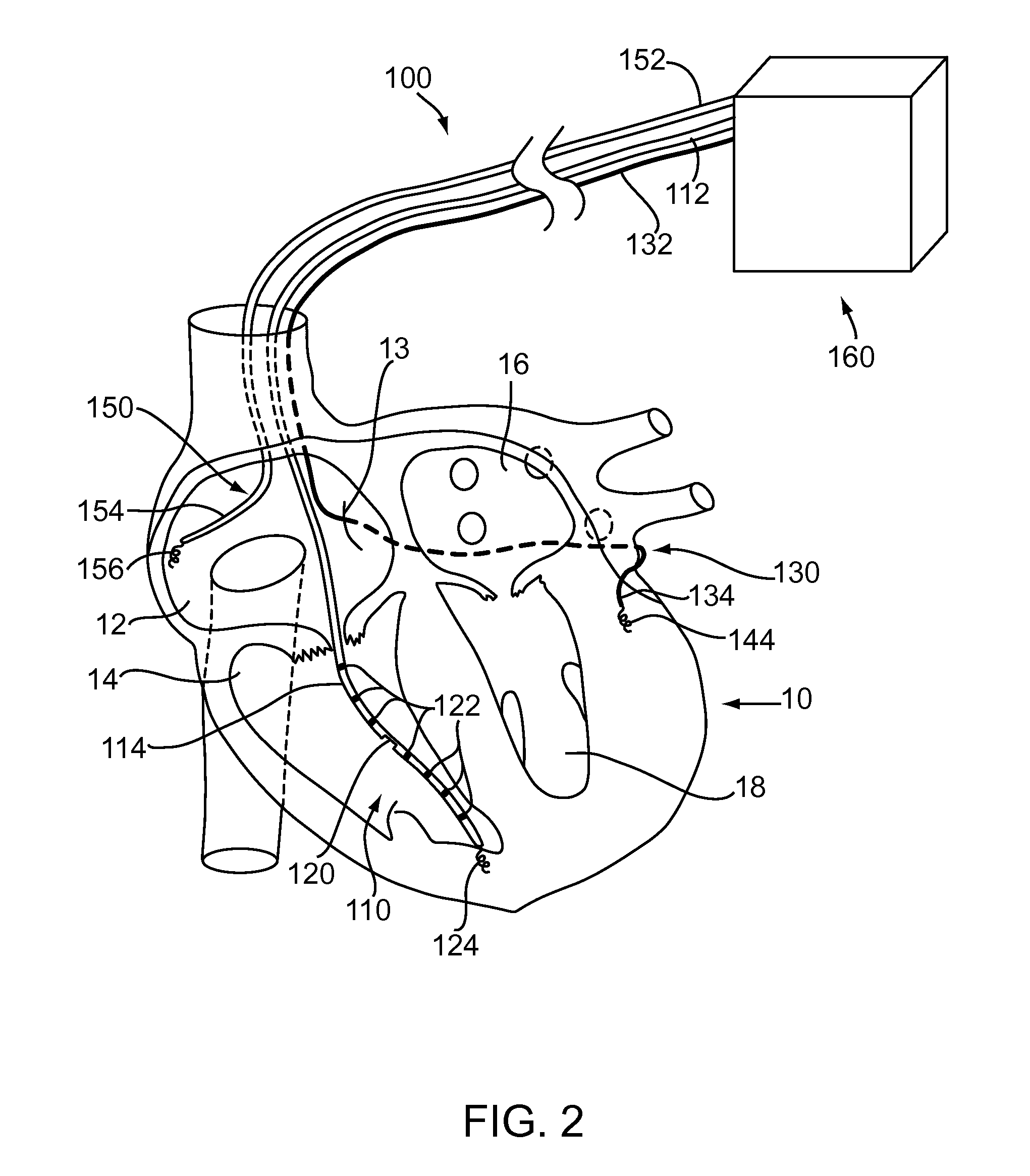Cardiac pacemakers and systems and methods for using them
a pacemaker and cardiac cycle technology, applied in the field of implantable devices, can solve the problems of inability to obtain accurate pressure measurements at multiple points in time throughout the cardiac cycle, and inability to continuously directly measure the effect of the adjustment of the timing of electrical impulses without invasive measurements
- Summary
- Abstract
- Description
- Claims
- Application Information
AI Technical Summary
Benefits of technology
Problems solved by technology
Method used
Image
Examples
Embodiment Construction
[0025]Turning to the drawings, FIG. 1 shows a cross-section of a heart 10, showing the various chambers of the heart, i.e., the right atrium 12, the right ventricle 14, left atrium 16, and left ventricle 18. In addition, FIG. 1 shows conduction pathways of the heart 10, e.g., the sinoatrial (“SA”) node 20, which is the impulse generating tissue in the right atrium 12, and the atrioventricular (“AV”) node 22, which includes the AV bundle or “Bundle of His”24. The AV bundle 24 splits into two branches, namely the right AV bundle branch 26, which activates the right ventricle 14, and the left AV bundle branch 28, which activates the left ventricle 18. The bundle branches 26, 28 taper out to produce numerous Purkinje fibers, which stimulate individual groups of myocardial cells to contract the chambers of the heart 10.
[0026]Turning to FIG. 2, an exemplary embodiment of a pacemaker system 100 is shown that may be implanted into a heart, such as the heart 10 of FIG. 1, e.g., for providing...
PUM
 Login to View More
Login to View More Abstract
Description
Claims
Application Information
 Login to View More
Login to View More - R&D
- Intellectual Property
- Life Sciences
- Materials
- Tech Scout
- Unparalleled Data Quality
- Higher Quality Content
- 60% Fewer Hallucinations
Browse by: Latest US Patents, China's latest patents, Technical Efficacy Thesaurus, Application Domain, Technology Topic, Popular Technical Reports.
© 2025 PatSnap. All rights reserved.Legal|Privacy policy|Modern Slavery Act Transparency Statement|Sitemap|About US| Contact US: help@patsnap.com



